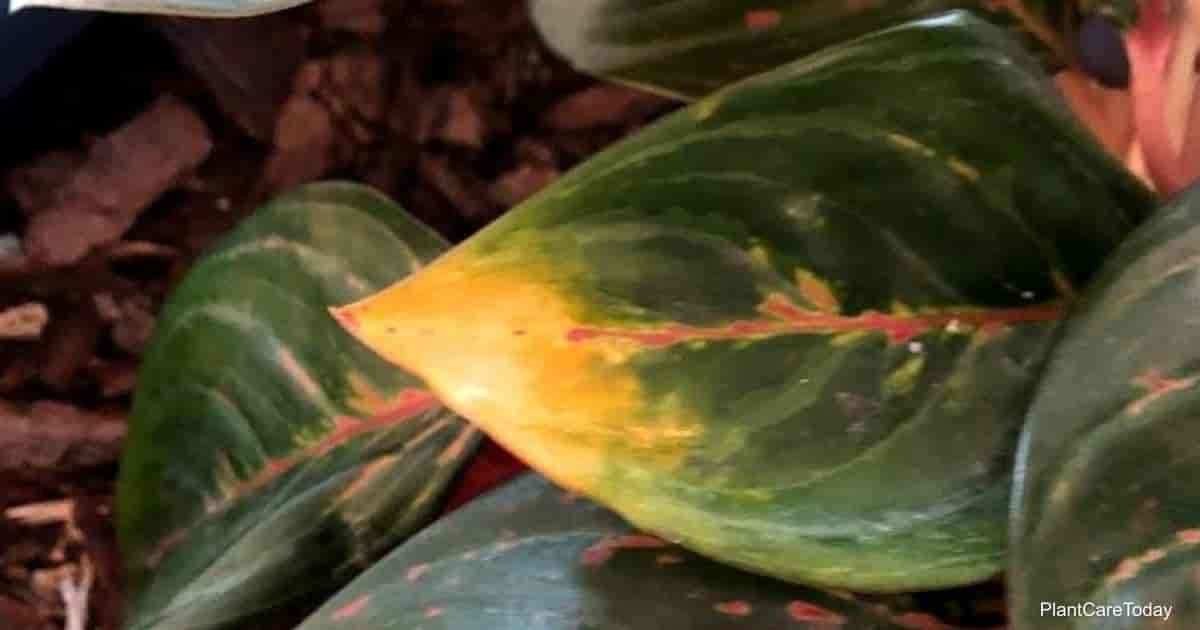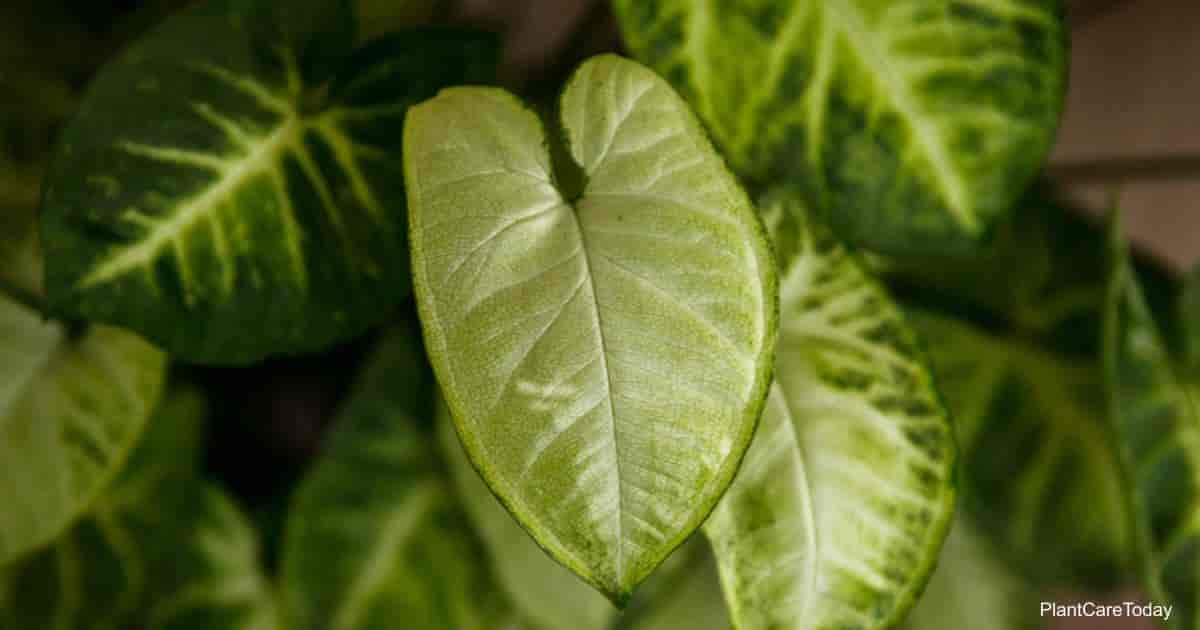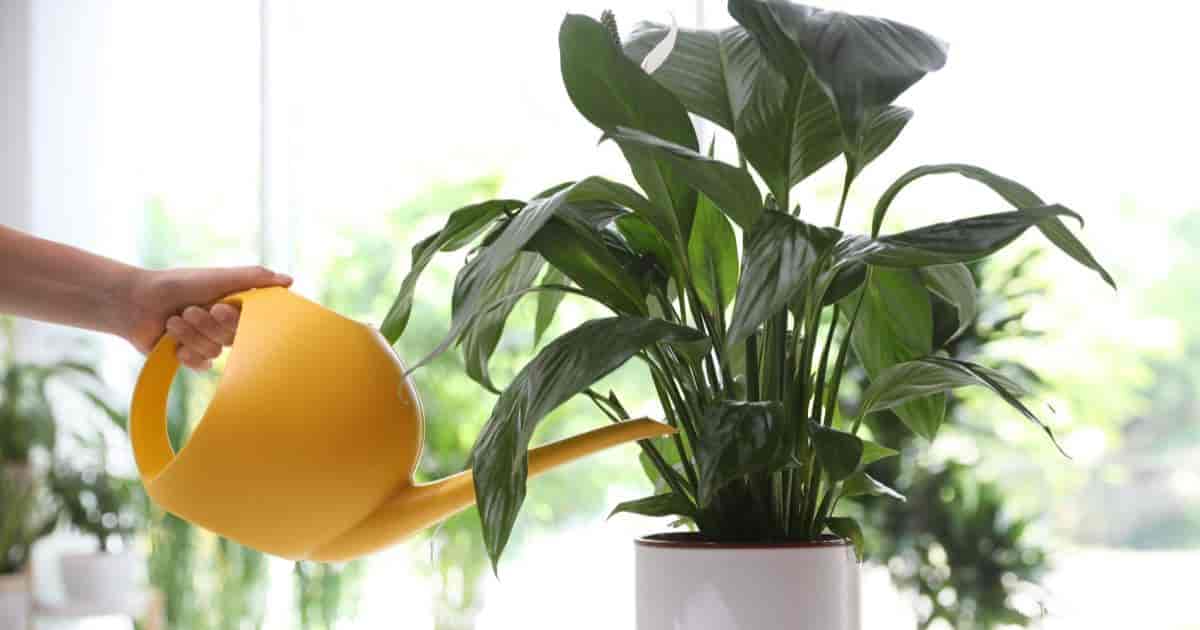Anthurium clarinervium was first documented in 1952 in southeastern Mexico by botanist Eizi Matuda. The specific epithet, clarinervium, means veined or nerved and references the deep, contrasting vein patterns on the plants’ leaves.
Pin
All Anthurium varieties belong to the Araceae family. Anthurium clarinervium [an-THUR-ee-um klar-ih-NER-vee-um] has several common names?
- Velvet Cardboard Anthurium
- Flamingo Flower
- Anthurium
- Tailflower
- Laceleaf
Anthurium Clarinervium Care
Size & GrowthClarinervium plants mature between the ages of 5 and 8 years. In a natural setting, they attain a height of approximately 24″ inches and a spread of approximately 24″ inches. Potted plants usually top out at about 2′ feet high.
The large, attractive, heart-shaped tough green leaves have prominent white veins. Older leaves may become brown along with the tips naturally.
When trying to determine whether browning leaf tips are problematic or not, consider the age of the leaves in question. As the leaves age, they naturally turn brown and drop.
Flowering & Fragrance
This member of the Araceae family produces relatively inconspicuous flowers similar to those of a Peace Lily.
The blooms usually appear late in the springtime or early in the summer and last for about five days. If pollinated, they transition into lovely, long-lasting clusters of berries.
Light & Temperature
This tropical plant does best with bright, indirect sunlight and consistent moderate heat. Therefore, it should not be placed in any setting that subjects it to extremes of heat, light, or darkness.
Take care not to place your plant near a radiator, heater, fireplace, or heat vent. High temperatures will dry it out and cause problems.
Throughout the growing season, this plant appreciates bright, indirect sunlight.
However, in the cooler seasons of the year, the plant is in a state of semi-dormancy, and a couple of hours of bright indirect sunlight daily can be helpful.
These anthuriums do best in temperatures consistently ranging from 59° degrees Fahrenheit to 75° degrees Fahrenheit. They are winter hardy in USDA hardiness zone 12. For this reason, they are usually grown as houseplants in the United States.
Watering & Feeding
As with most jungle plants, soil that is kept evenly moist but not overwatered is desirable. Wait until the top one-third of the potting mixture is dry, and then water thoroughly.
Water more during the spring and summer and reduce watering during the autumn and winter.
Be sure to use room temperature or lukewarm water when watering Anthurium clarinervium. Coldwater can shock the root system.
Bottled water, filtered water, or rainwater are the best choices. If you use tap water, be sure to let it stand in the open for a full twenty-four hours so that fluoride and chlorine can dissipate.
Humidity levels should be kept high through the use of a humidifier or a pebble tray.
Fertilize with a standard houseplant fertilizer about once a month during the growing season. During the colder months, you may provide a weakened solution of fertilizer every six weeks.
Soil & Transplanting
You should not need to repot your plant but once every couple of years.
Anthurium clarinervium can react very negatively to transplanting, so when repotting healthy plants, water thoroughly a full day before repotting. Handle the roots very carefully to help prevent transplant shock.
When repotting, move up to the next size pot. Overpotting can cause problems. It is best to use a terra-cotta pot that has ample drainage.
To improve drainage, use a light, loose, airy mixture such as a commercial orchid mix or a bespoke combination of peat moss, perlite, and orchid mix.
Grooming & Maintenance
Prune away dead or damaged leaves and stems as needed.
Related: Anthurium Clarinervium
How To Propagate Anthurium Clarinervium?
The best way to propagate this Anthurium is through division. When you repot your plant, you are likely to find offsets or pups at its base. Separate them gently and place them in small pots. Then, treat them as mature plants.
Anthurium clarinervium can also be started from stem cuttings. This is not as reliable as separating pups, but it can be done. Take cuttings in the springtime. Take your cutting using a clean, sharp implement.
A semi-wooded stem is best. Be sure to get a cutting that has one or two leaf nodes. Remove lower leaves and place the cutting in moist compost.
Cover lightly with a plastic bag to keep the humidity high and encourage the growth of roots.
Place your cutting in an area that provides bright, indirect sunlight and consistently warm temperatures and humidity. In about three weeks, you should see new leaves forming. At this time, you can remove the plastic bag.
Anthurium Clarinervium Pest Or Disease Problems
These plants are subject to predation by common houseplant pests such as mealybugs, spider mites, and thrips.
In addition to problems with common houseplant pests, Anthurium is also prone to diseases such as:
- Leaf Spot disease
- Root Rot
- Botrytis
- Rust
The good news is that most of these pests and disease problems can be kept under control with proper watering the right amount of light, warmth, and humidity.
Too much water, too little light, and too much humidity will cause fungal and mold growth problems.
Take great care to water correctly. When you overwater, there is very little chance that you will be able to save the plant.
If you overwater Anthurium clarinervium, you will find that the leaves begin to turn yellow, and brown halos will appear. New growth will be sporadic, and stems may weaken and rot.
If you underwater your Anthurium clarinervium, you will find that the edges of the leaves will turn brown, and new growth will be stunted or deformed.
Excessive heat and light can also cause these problems. Luckily, this can be resolved with a good watering.
The right amount of humidity is also important. Too little or too much can cause the tips of plants’ leaves to turn brown and curl.
It’s a good idea to give your plant a thorough overhead watering from time to time to wash off the leaves and remove dust that may be interfering with the absorption of light and moisture.
Fungal infections can cause rot. If your plant collapses, your first step may be to repot it. Then, remove it from its soil and rinse the roots.
Examine them carefully. If the roots are yellowish, they are healthy. If they are rotten and brown, they are unhealthy.
Use a sharp, sterile implement to prune the rotten parts off. Remove any roots, stems, or leaves that are soft or unhealthy.
Repot the plant in a fresh, clean potting mix and allow it to settle in for a couple of days before providing a moderate watering.
It’s a good idea to take some stem cuttings at this time and start new plants just in case your ailing plant does not make it.
Is The Plant Considered Toxic Or Poisonous To People, Kids, Pets?
Anthurium clarinervium is considered poisonous because they contain high concentrations of calcium oxalate crystals. If ingested in large quantities, severe gastric distress will ensue, and medical attention should be sought.
Is The Plant Considered Invasive?
These somewhat finicky tropical plants are not invasive.
Suggested Anthurium Clarinervium Uses
These plants make a lovely addition to any house or office plant collection in any setting that can prove consistent warmth, bright, indirect light, and ample humidity.
Credit : Gary Antosh (https://plantcaretoday.com/anthurium-clarinervium.html)





